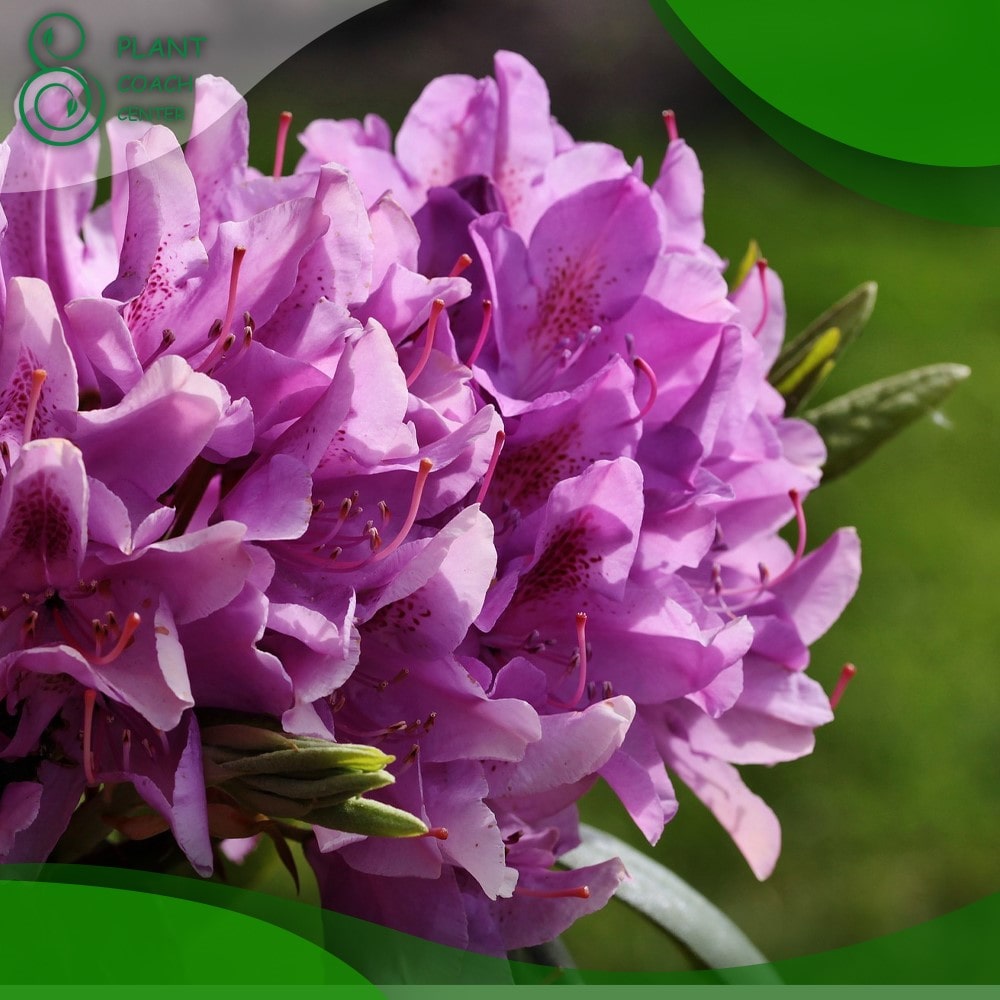When Do You Trim Rhododendrons
Rhododendrons are a popular flowering shrub that can add color and beauty to any garden. However, caring for these plants can be challenging, especially when it comes to pruning. In this article, we will discuss when to trim rhododendrons and provide you with tips on how to do it properly.
Why Prune Rhododendrons?
Pruning is an essential part of rhododendron care, and there are several reasons why you should do it:
Promote healthy growth: Pruning helps to remove dead, diseased, or damaged branches, which can otherwise hinder the plant’s growth.
Control the size and shape: Rhododendrons can grow quite large, and pruning can help to keep them in check and maintain their shape.
Encourage flowering: Pruning can stimulate the growth of new branches, which can lead to more flowers.
When to Trim Rhododendrons
The best time to trim rhododendrons depends on the type of pruning you want to do. Here are the different types of pruning and when to do them.
Deadheading
Deadheading is the process of removing spent blooms from the plant. This type of pruning should be done as soon as the flowers begin to fade, typically in late spring or early summer.
Pinching
Pinching is a type of pruning that involves removing the tips of young shoots to promote branching. This should be done in the spring, just as new growth begins to appear.
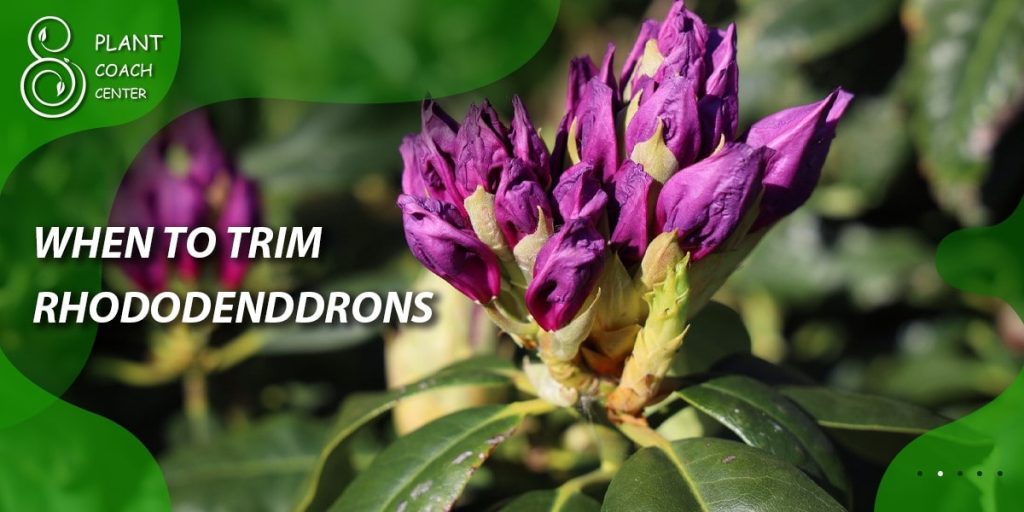
Thinning
Thinning involves removing entire branches to promote better air circulation and light penetration. This should be done in the late winter or early spring, before new growth appears.
Renewal
Renewal pruning involves removing entire branches to rejuvenate an old or overgrown plant. This should be done in late winter or early spring, before new growth appears.
How to Trim Rhododendrons
Now that you know when to trim rhododendrons, here are some tips on how to do it properly:
- Use sharp, clean pruning shears.
- Make cuts at a 45-degree angle.
- Avoid cutting into the woody part of the stem.
- Remove no more than one-third of the plant’s total growth at one time.
- Sterilize your pruning tools between cuts to prevent the spread of disease.
What are some common mistakes to avoid when pruning rhododendrons?
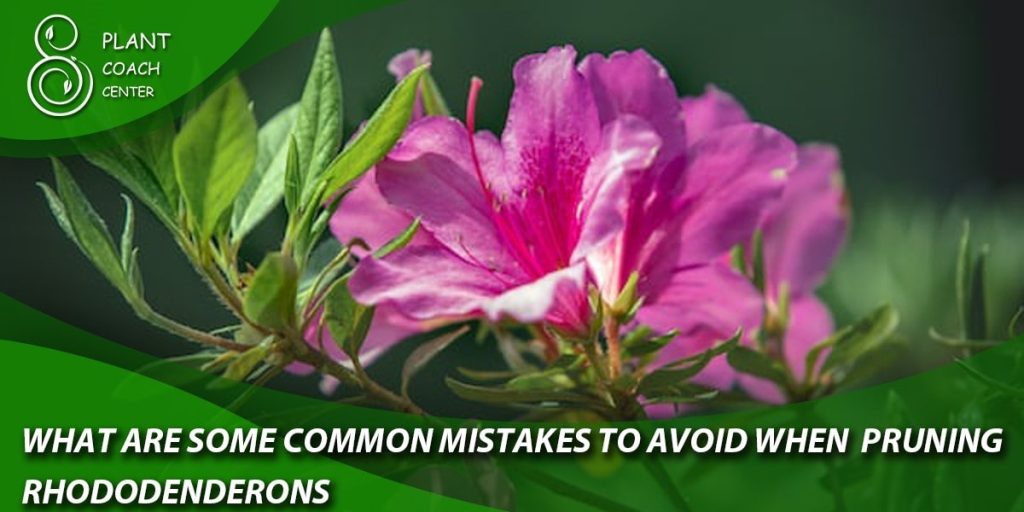
Pruning rhododendrons can be a delicate process, and there are several common mistakes that gardeners should avoid:
Over-pruning: Removing too much of the plant at once can weaken it and make it more susceptible to disease and pests.
Pruning at the wrong time: Pruning at the wrong time can also weaken the plant and interfere with its growth and flowering.
Cutting into the woody part of the stem: Cutting into the woody part of the stem can damage the plant and make it more vulnerable to disease.
Using dull or dirty pruning tools: Dull or dirty pruning tools can damage the plant and spread disease.
Failing to sterilize pruning tools: Sterilizing pruning tools between cuts can help prevent the spread of disease.
Neglecting to water and fertilize after pruning: After pruning, it is essential to water and fertilize the plant properly to help it recover and promote healthy growth.
When is the best time of year to prune rhododendrons?
The best time to prune rhododendrons depends on the type of pruning you want to do. Here are some general guidelines:
Deadheading: Deadheading is the process of removing spent blooms from the plant. This type of pruning should be done as soon as the flowers begin to fade, typically in late spring or early summer.
Pinching: Pinching is a type of pruning that involves removing the tips of young shoots to promote branching. This should be done in the spring, just as new growth begins to appear.
Thinning: Thinning involves removing entire branches to promote better air circulation and light penetration. This should be done in the late winter or early spring, before new growth appears.
Renewal: Renewal pruning involves removing entire branches to rejuvenate an old or overgrown plant. This should also be done in late winter or early spring, before new growth appears.
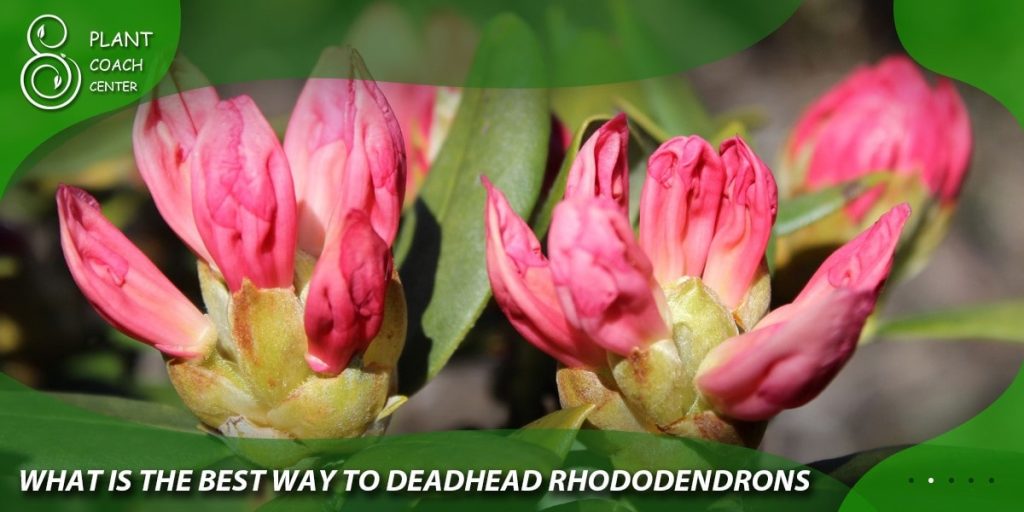
What is the best way to deadhead rhododendrons?
Deadheading is the process of removing spent blooms from the plant, and it is an essential part of rhododendron care. Here’s the best way to deadhead rhododendrons:
Wait until the flowers have faded: Deadheading should be done as soon as the flowers begin to fade, typically in late spring or early summer.
Locate the spent blooms: Look for the spent blooms on the end of the stem.
Pinch or cut off the spent blooms: To deadhead the plant, you can either pinch or cut off the spent blooms just below the base of the flower head. Be sure not to damage any new buds or leaves that may be growing nearby.
Dispose of the spent blooms: Once you have removed the spent blooms, dispose of them properly. Do not leave them on the ground near the plant, as this can attract pests and disease
Tips for Healthy Rhododendron Growth
Here are some additional tips for promoting healthy growth in rhododendrons:
Soil: Rhododendrons prefer well-draining, acidic soil with a pH between 4.5 and 6.0. If your soil is too alkaline, you can amend it with organic matter such as peat moss, pine needles, or compost.
Watering: Rhododendrons require regular watering, especially during dry spells. Water deeply and thoroughly to ensure that the roots are getting enough moisture.
Fertilizing: Fertilize your rhododendrons with a balanced, slow-release fertilizer in the spring, just as new growth begins to appear. Avoid fertilizing in the fall, as this can stimulate new growth that may not have time to harden off before winter.
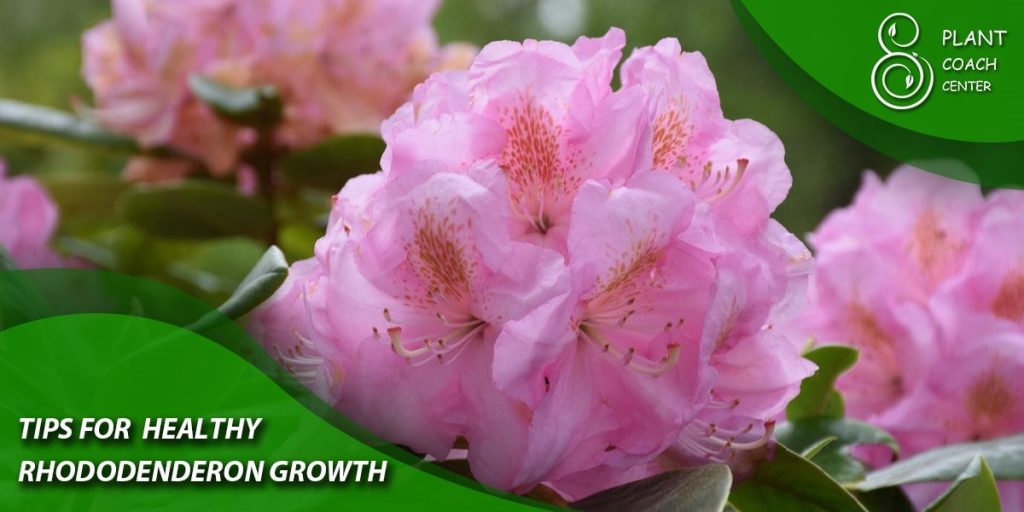
Mulching: Mulching around the base of the plant can help to retain moisture, suppress weeds, and regulate soil temperature. Use a layer of organic mulch such as shredded leaves, pine needles, or bark.
Sunlight: Rhododendrons prefer partial shade, especially during the hottest part of the day. Too much sun can damage the leaves and cause the plant to wilt.
Pruning: Regular pruning can help to promote healthy growth and control the size and shape of the plant. Be sure to prune at the appropriate time and avoid over-pruning.
Conclusion
Pruning is an essential part of rhododendron care, and knowing when to trim them can help you keep your plants healthy and looking their best. By following the tips in this article, you can ensure that your rhododendrons thrive year after year.
Can you trim rhododendrons in the summer?
Yes, you can trim rhododendrons in the summer, but it is best to avoid heavy pruning during this time, as it can stimulate new growth that may not have time to harden off before winter.
How often should you trim rhododendrons?
Rhododendrons should be pruned as needed to maintain their size and shape.
Can you trim rhododendrons in the fall?
Fall is not the best time to prune rhododendrons, as the plant needs time to prepare for winter. It is best to prune in late winter or early spring, before new growth appears.
How do you prune an overgrown rhododendron?
To prune an overgrown rhododendron, you can use a technique called renewal pruning, which involves removing entire branches to rejuvenate the plant. This should be done in late winter or early spring.
How do you deadhead rhododendrons?
To deadhead rhododendrons, simply pinch or cut off the spent blooms as soon as they begin to fade. This will prevent the plant from wasting energy on producing seeds.
What is the best time to thin rhododendrons?
Thinning should be done in the late winter or early spring, before new growth appears.


